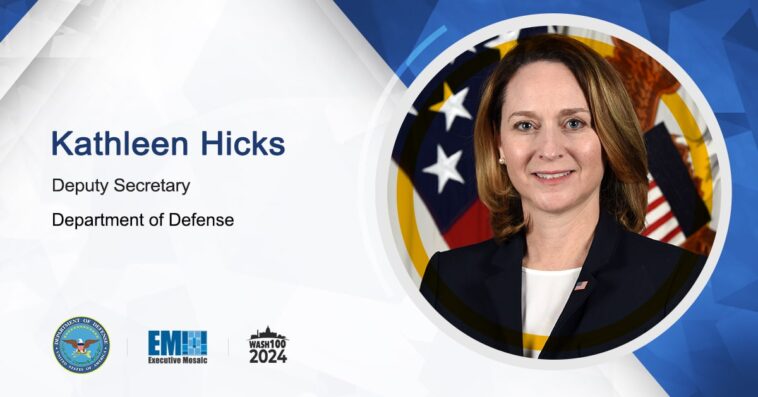The Department of Defense has honed in on artificial intelligence as a top priority in recent years, especially for military applications. With the 2022 establishment of the Chief Digital and Artificial Intelligence Office, or CDAO, and the inception of the generative AI Task Force Lima in 2023, the Pentagon has significantly ramped up its AI initiatives and capabilities.

Stay up to date with the latest AI advancements at the Potomac Officers Club’s 5th Annual AI Summit on March 21. Join us to meet, network with and learn from the most influential AI thought leaders and experts from government and industry. Register here.
Deputy Secretary of Defense Kathleen Hicks said there’s no debating the “why” of zeroing in on AI — because it can give us better decision advantage, especially given our pacing challenge with competitors like China.
“In deterring and defending against aggression, AI-enabled systems can greatly improve the speed, quality, and accuracy of commanders’ decisions — which can be decisive in deterring a fight, and winning a fight,” the four-time Wash100 Award winner said at the Advantage DOD 2024: Defense Data & AI Symposium in Washington, D.C.
But at least two key roadblocks are standing in the way of rapid, responsible AI development and advancements for the Pentagon. The first is funding, and Hicks urged Congress to act quickly in order to keep AI initiatives on the right path before it’s too late.
“One of our combatant commanders recently reached out to me noting that the advances they are relying on from CDAO are dead in the water without our fiscal year 2024 appropriations,” said Hicks. “So, we need Congress to come together and pass appropriations for 2024, ASAP. It is long overdue, and the delay is devastating.”
The second challenge facing the Pentagon is a cultural one.
“Our processes date back to the 1960s, when defense dollars were the main driver of American innovation, and the private sector less so. The script flipped long ago — with commercial tech companies now doing the lion’s share of innovation, especially with data, digital analytics, and AI. Yet Pentagon practices didn’t keep up, even though it’s been decades since DoD was alone at the tip of the innovation spear,” Hicks revealed.
Hicks said in response, the DOD has been taking a “comprehensive, iterative, warfighter-centric approach to defense innovation writ large” over the past three years using a “DevSecOps mindset.” She added that overall, the DOD is succeeding in overcoming its “historical baggage,” and she urged the defense workforce to “never get complacent” and to remain adaptive to technological advancements.
Learn more about the challenges and opportunities facing the Pentagon as AI advancements continue — don’t miss POC’s 5th Annual AI Summit on March 21. Register here.





